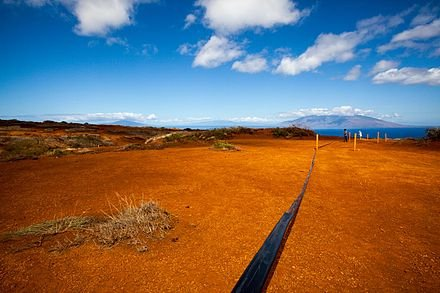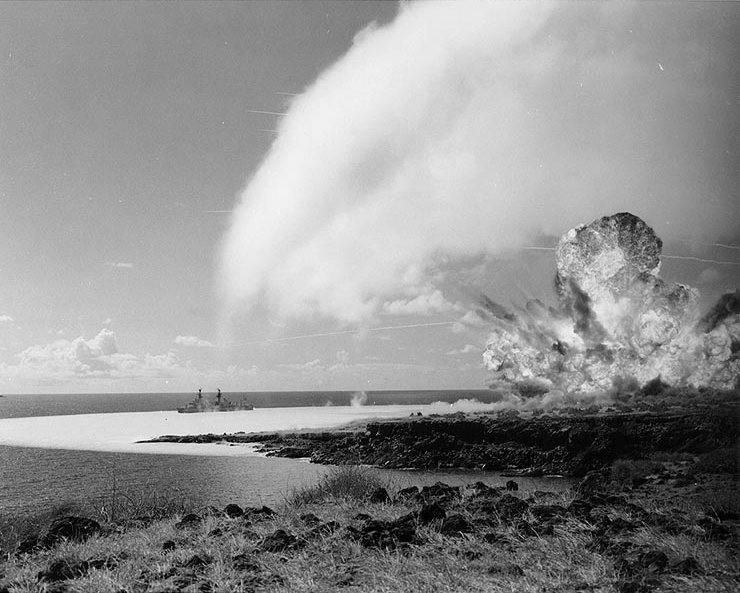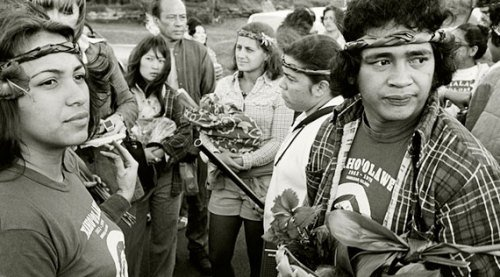Ka Mokupuni o Kahoʻolawe
- useduforce

- Mar 2, 2022
- 4 min read
Updated: Mar 29, 2022
Aloha kākou! Eia ka manaʻo o ka mokupuni o Hawaiʻi ʻo Kahoʻolawe. Ua heluhelu kākou i ka manaʻo o ka mokupuni o Hawaiʻi “nui.” E hoʻopaʻa haʻawina o Kahoʻolawe kākou i kēia manawa!
[Hello everyone! Here is information on the Hawaiian island Kaho’olawe. We read information about the “big” Hawaiian Island. Let’s study Kaho’olawe now!]
Here, again, is the list of the ʻewalu (eight) mokupuni o Hawaiʻi. I’ll be focusing on Kahoʻolawe, the “Target Isle,” today. Note the ʻokina (apostrophe) in its name. On maps, it’s often incorrectly omitted!
Nā Mokupuni o ka Mokuʻāina ʻo Hawaiʻi:
Maui; inoa: The Valley Isle
Kahoʻolawe; inoa: The Target Isle
Lānaʻi; inoa: The Pineapple Isle
Molokaʻi; inoa: The Friendly Isle
Oʻahu; inoa: The Gathering Place [state capital: Honolulu]
Kauaʻi; inoa: The Garden Isle
Niʻihau; inoa: The Forbidden Isle

Ka mokupuni o Kahoʻolawe
Officially since 1993, the island-wide volcano of Kahoʻolawe is prohibited to visit for commercial/touristic use and has historically been uninhabitable - there are currently zero permanent residents and there had only ever been a maximum of 50-80 residents at one time in its recorded history. Now, the only people who temporarily reside there are those that volunteer to aid the island environmentally, or those that participate in cultural/religious restoration.
Kahoʻolawe never had much source of fresh water on land. And, though only ʻehiku (seven) miles away, Maui’s volcano creates a rain shadow for our small island - it blocks any rainwater from blowing over to Kahoʻolawe. With hardly any fresh water available, plant and human life is largely impossible. In the 1800s, a shipment of sheep and goats became overpopulated and undercontrolled, so what little plant life that might have been alive at the time was overgrazed by the animals. With the constant droughts, de-vegetation, and natural trade-winds, the soil has become red hardpan; this means that any little rainwater that might fall will roll off the land, instead of being absorbed by it. Additionally, historic Hawaiian wars of conquest laid waste to the land, wiping out any remaining human life.

Kahoʻolawe's red hardpan soil (Maui in the distance)
Due to the island’s desertion, King Kamehameha III had replaced the Hawaiians’ death penalty with sending convicted male criminals to exile on Kahoʻolawe. Some reportedly starved to death, others fled by swimming the ʻehiku miles to Maui. This system was repealed a few decades later.

Kahoʻolawe in the distance (semi-aerial view from Maui)
This mokupuni liʻiliʻi (small) also has a unique recent history. After Pearl Harbor, since the mokupuni was uninhabited and the land was already hardpan, the United States Navy started using Kahoʻolawe as a training ground in 1941, in preparation for our involvement in World War II. The mokupuni had bombs buried and detonated for decades, all the way until 1990 - hence the given appellation “Target Island.”

Detonation of 500-ton TNT explosive on Kahoʻolawe, 1965
In 1976, a group of Native Hawaiians formed the Protect Kahoʻolawe ʻOhana (PKO) as an organized protest against the bombing and filed a lawsuit against the government. The group of ʻeiwa (nine) staged a symbolic “invasion” of the mokupuni in a form of protest. Some were arrested and some were barred access to the island again.

Group of activists, 1976
In the aforementioned year 1993, the Hawaiʻi State Legislature created the Kahoʻolawe Island Reserve which established that Kahoʻolawe only be used for environmental and cultural preservation. It also created the Kahoʻolawe Island Reserve Commission (KIRC) which organizes, hires, and transports volunteers to restore the island, and continues the renovation to this day. Below is a link to the KIRC volunteer packet and form from their website detailing the process and precautions.
Kahoʻolawe is still considered extremely dangerous, as active bombs are hidden around the island and surrounding waters. The government had agreed to spend 10 years and $440 million in clearing about 75% of the unexploded ordnance. Since the halt in 2003, any visitors are strictly required to abide by safety protocol while travelling and sojourning, and only for volunteer purposes.
Volunteer efforts (managed by KIRC, mentioned above) are crucial to Kahoʻolawe’s recovery and survival, and they must come up with innovative ideas to undo centuries of damage. These efforts include removing debris; soil conservation; erosion control; revegetation of the original, native Hawaiian plants; and engineering irrigation installments to catch and utilize fresh water to efficiently sustain plant life (among other endeavors) - all on safe, non-restricted and non-dangerous ground.

KIRC volunteers working on Kahoʻolawe's soil
KIRC also manages cultural and religious renewals, including the annual Makahiki (literally year) that has been held on Kahoʻolawe since 1980. The Makahiki is a harvest festival and offering to Lono, ke akua Hawai’i o ka ‘āina (the Hawaiian god of the land [agriculture and fertility]). The season starts late October so that the Hawaiian people may give thanks to the akua for this year's harvest. More detailed information about the ceremonies can be found in the link provided below! KIRC also aims to rededicate ancient shrines and temples (called heiau).
Hua ʻōlelo [Vocab] -
- ʻehiku = seven
- ʻewalu = eight
- ʻeiwa = nine
- Mokupuni = island
- Liʻiliʻi = small, little
- Makahiki = year
- Akua = god
- ʻāina = land, earth
SOURCES:
- KIRC Volunteer packet: http://www.kahoolawe.hawaii.gov/access/VolunteerPacketMay2017.pdf
- Makahiki:
~~~


Comments